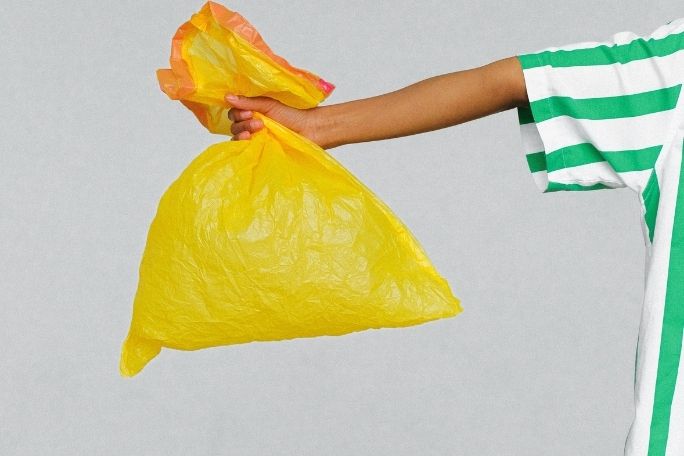Lesson summary
Students will investigate the types and amounts of rubbish that they and their family produce over the course of one day. Students will use the worksheet to record their results and will share their results with the class. Activity adapted from Activate Your Students: An inquiry-based learning approach to sustainability.
Learning intentions:
Students will...
- learn that even over one day a family can produce quite a lot of waste
- understand the Waste Hierarchy and how it can be used to help us reduce the amount of waste we create
- recognise that much of the waste produced by their families can be recycled and saved from going to landfill.
Success criteria:
Students can...
- work independently to calculate the amount of waste produced at home
- know how the waste hierarchy can be used to understand what to do with waste and how to reduce it
- analyse results to draw conclusions and make recommendations about how to reduce waste at home.
Lesson guides and printables
View Supporting Resources
Curriculum links
Select your curriculum from the options below.
Lesson details
Skills
This lesson is designed to build students’ competencies in the following skills:
- community engagement
- critical thinking
Curriculum mapping
Content descriptions:
Year 5 Mathematics:
- Choose appropriate units of measurement for length, area, volume, capacity and mass (ACMMG108)
- Pose questions and collect categorical or numerical data by observation or survey (ACMSP118)
- Construct displays, including column graphs, dot plots and tables, appropriate for data type, with and without the use of digital technologies (ACMSP119)
Year 5 Science:
- Compare data with predictions and use as evidence in developing explanations (ACSIS218)
- Communicate ideas, explanations and processes in a variety of ways, including multi-modal texts (ACSIS093)
- Construct and use a range of representations, including tables and graphs, to represent and describe observations, patterns or relationships in data using digital technologies as appropriate (ACSIS090)
Year 6 Mathematics:
- Interpret and compare a range of data displays, including side-by-side column graphs for two categorical variables (ACMSP147)
Year 6 Science:
- Construct and use a range of representations, including tables and graphs, to represent and describe observations, patterns or relationships in data using digital technologies as appropriate (ACSIS107)
- Compare data with predictions and use as evidence in developing explanations (ACSIS221)
- Communicate ideas, explanations and processes in a variety of ways, including multi-modal texts (ACSIS110)
Syllabus outcomes: MA3-10MG, MA3-18SP, ST3-4WS.
General capabilities: Critical and creative thinking.
Cross-curriculum priority: Sustainability OI.3, OI.8.
Time required: 45 mins.
Level of teacher scaffolding: Low – lead students in a class discussion on the results.
Additional info
Following this lesson plan is an ideal way for your school to take part in Schools Clean Up Day or a Clean Up on any day of the year. You’ll be joining thousands of amazing teachers in making a difference and creating positive environmental change.





Welcome back!
Don't have an account yet?
Log in with:
Create your free Cool.org account.
Many of our resources are free, with an option to upgrade to Cool+ for premium content.
Already have an account?
Sign up with:
By signing up you accept Cool.org's Terms and Conditions(Opens in new tab) and Privacy Policy(Opens in new tab).